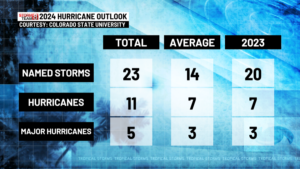
Overview of the 2024 Atlantic Hurricane Season
Predictive Insights
In the lead-up to the season, NOAA and other weather experts utilized advanced climate models and historical data to project an above-average hurricane season. Factors contributing to this prediction included warmer sea surface temperatures in the Atlantic Ocean and favorable atmospheric conditions that typically enhance storm development. The presence of these conditions indicated a likelihood of increased hurricane activity, prompting communities along the coast to prepare for potential impacts.
Storm Activity and Records
As the season unfolded, it became evident that the predictions were accurate. The 2024 season saw a significant uptick in storm formation, particularly during what is traditionally considered the peak months of August and September. After a relatively quiet start to the season, an unprecedented surge in activity occurred, leading to several storms developing in rapid succession. This unusual pattern was noted by meteorologists who emphasized that such spikes in storm formation can be attributed to shifts in atmospheric patterns and ocean temperatures.
Among the notable storms was Hurricane Fiona, which rapidly intensified into a Category 4 hurricane before making landfall in several Caribbean nations. The storm caused widespread damage and prompted extensive evacuation efforts. Additionally, Hurricane Ian re-emerged as a significant threat later in the season, showcasing the unpredictable nature of hurricane paths and intensities.
Impacts on Communities
The impact of the 2024 hurricane season was felt across various regions, particularly in coastal areas that are often vulnerable to storm surges and flooding. Communities were reminded of the importance of preparedness as they faced threats from both hurricanes and tropical storms. Emergency management agencies activated their response plans, providing resources for evacuation and recovery efforts.
Moreover, the economic implications of this active season were substantial. Damage estimates from various storms reached billions of dollars, affecting infrastructure, housing, and local economies. The recovery process will likely be long-term for many affected areas as they work to rebuild and fortify against future storms.
Conclusion
In summary, the 2024 Atlantic hurricane season lived up to its predictions of above-average activity, highlighting both the accuracy of meteorological forecasting and the ongoing challenges posed by climate change. As scientists continue to study these patterns, it remains crucial for communities to prioritize preparedness and resilience strategies to mitigate the impacts of future hurricane seasons. The lessons learned from this year’s events will undoubtedly inform better practices for disaster response and recovery moving forward.



Leave a Reply